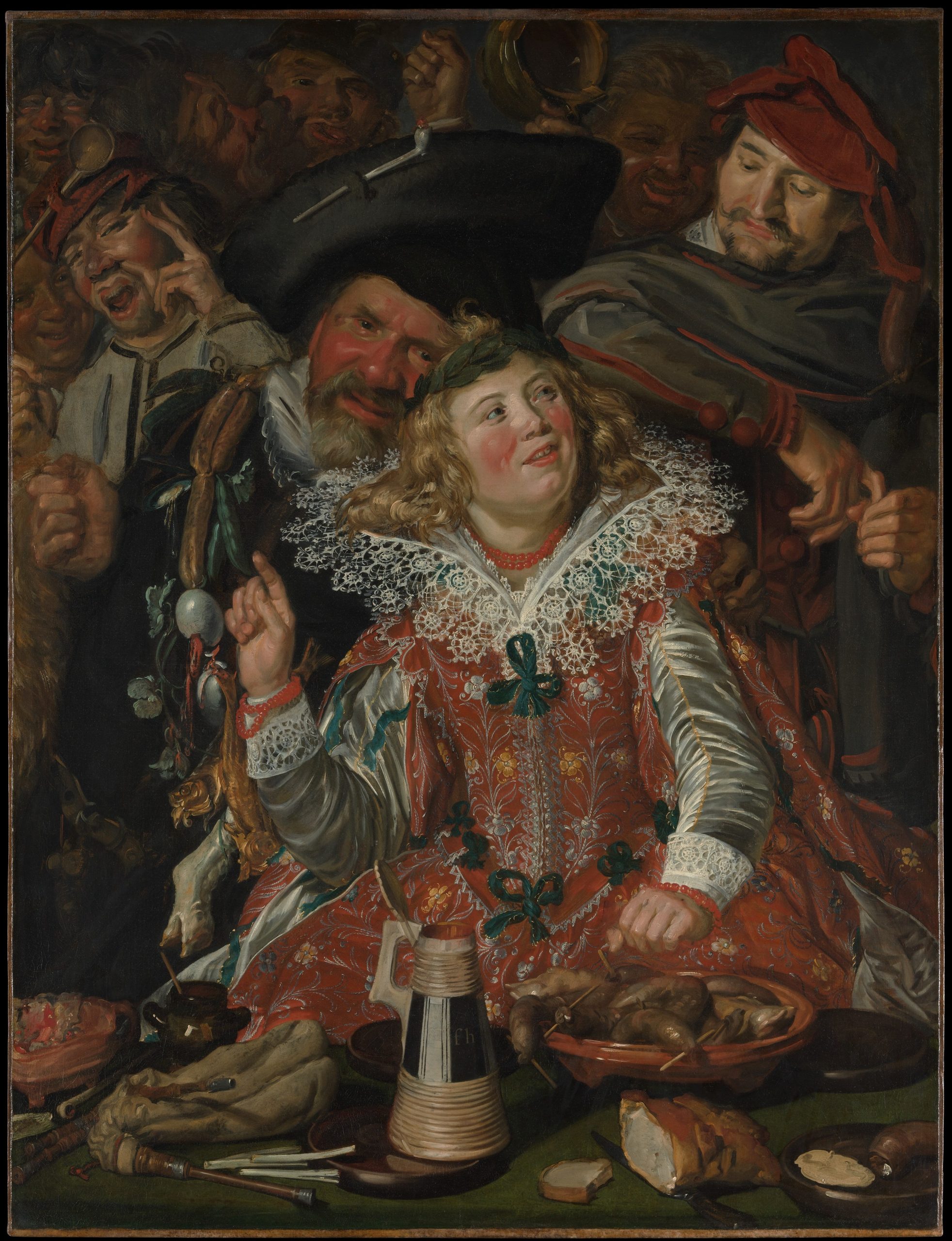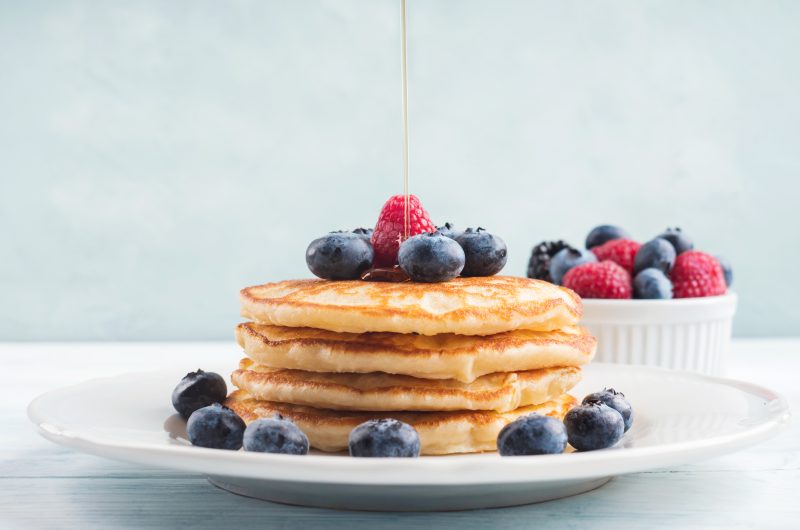
ABOUT THE ART
Hals, Frans. “Merrymakers at Shrovetide.” Ca. 1616–17. Oil on canvas, 51 3/4 x 39 1/4 in. (131.4 x 99.7 cm). Metropolitan Museum of Art, New York. Bequest of Benjamin Altman, 1913. Accession number 14.40.605.
Mardi Gras, previously known as Shrovetide, is a time-honored period of self-indulgence prior to the self-control and abstemiousness of Lent. During the 17th century in the Netherlands, it was also a time for theatrical presentations by the painters’ guilds. In this painting by Hals, two archetypal figures from these performances are depicted: Hans Worst, with a sausage hanging from his hat, and Pekelharing, who wears a wreath made of salted fish and eggs. They are joined by a lavishly attired girl, most likely a boy in disguise, as women were not permitted to perform during these events. The foreground is cluttered with still life elements, alluding to both the traditional foods of the festival and an abundance of suggestive undertones.
Fat Tuesday – Last Day of the Season of Epiphany
Fat Tuesday is the last day in the Season of Epiphany. The day has a twofold purpose: ending one season and beginning another. First, the end of carnival is marked by indulging in or finishing off any foods from which you will be fasting. Traditionally, these include meats, eggs, and fat. Traditions that emphasize this part refer to the day as Fat Tuesday or Busting Tuesday (as they say in Iceland). The second purpose of the day is spiritual preparation for the upcoming fast through confessing one’s sins and deciding upon the nature of one’s fast. Traditions that emphasize this part call it Shrove Tuesday. The word “shrove” means finding absolution for one’s sins. The day may also include a bonfire made from the branches of the previous year’s Palm Sunday celebration. The ashes from that celebratory fire are used the next day for Ash Wednesday.
The most common food to celebrate the day, no matter what name you call it, is pancakes. They are the perfect food to use up any lard and eggs that you may have leftover. It is possible that pancakes, like crepes from the nearby Candlemas (February 2), date back all the way to the flat cakes enjoyed in Roman times during the feast of Lupercalia. Today, it is common for churches to have an early pancake supper before the community Mardi Gras parade. We think the secret to great pancakes is using buttermilk and having great toppings. Real maple syrup is always a treat, and southerners love cane syrup. But we think bananas foster is the best. The flambé trick is always a showstopper. Mixing blueberries, chocolate chips, pecans, or walnuts into the batter also makes them special. A bit of whipped cream to top it off makes it worthy of this day of celebration. We serve ours with a side of bacon and some coffee.

Buttermilk Pancakes
Pancakes are usually served with butter and syrup, but can also be topped with whipped cream, fresh fruit, or chocolate chips for a more decadent treat.
Keep the screen of your device on
Ingredients
2 cups 2 (10 oz) all-purpose flour
1 teaspoon 1 baking powder
1/2 teaspoon 1/2 baking soda
1 teaspoon 1 salt
1 tablespoon 1 sugar
2 large 2 eggs, separate yolk and egg whites
1 1/2 cups 1 1/2 (12 oz) buttermilk
1 cup 1 (8 oz) sour cream
4 tablespoons 4 unsalted butter, melted
Directions
- Combine 2 cups all-purpose flour, 1 tsp baking powder, 1/2 tsp baking soda, 1 tsp salt, and 1 tbsp sugar in a medium bowl. Whisk until combined.
- In a separate bowl whisk egg whites from 2 eggs until stiff peaks form. (We found that an egg beater worked best to whisk the egg whites.)
- In another bowl, whisk the 2 egg yolks, 1 1/2 cups buttermilk, and 1 cup sour cream until combined. Slowly add the 4 tablespoons melted butter while whisking.
- Carefully fold in the egg whites until just combined.
- Pour the wet mix over the dry mix and fold until just combined (lumps are ok).
- Pre-heat a nonstick skillet (we prefer an electric griddle) on medium heat for 5 minutes. Carefully add a small amount of butter with a paper towel until no visible butter remains. Using about 1?4 cup batter per each pancake, cook until the edges begin to dry and bubbles start to appear on top, about 2 minutes. Carefully flip the pancakes and cook on the second side until golden brown.